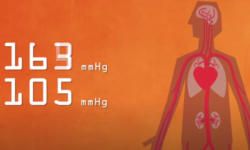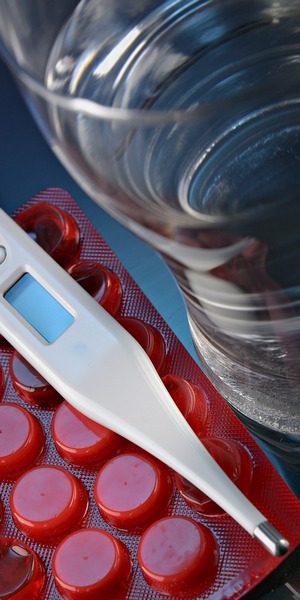Managing Morning Hypertension: A Comprehensive Dawn Phenomenon Guide

Waking up to a new day should not equate to waking up to high blood pressure. Yet, for many people, this is a health challenge they face daily. This phenomenon, termed ‘morning hypertension’ or ‘dawn phenomenon,’ impacts a significant portion of adults.
This comprehensive guide aims to demystify morning hypertension (MH), helping you understand its implications, diagnostic methods, and best practices for managing and preventing this medical condition.
Understanding Morning Hypertension and Its Potential Consequences
Just as a new day dawns, so too can the blood pressure in our bodies rise. This early morning rise, often known as the dawn phenomenon or morning hypertension, is more than a mere wake-up call. It’s a medical condition that demands understanding and careful management.
Occurring typically between 6 and 8 am, this surge in blood pressure is influenced by several factors, including physiological processes like hormone fluctuations, reduced insulin sensitivity, and even certain lifestyle factors.
Untreated MH poses significant health risks, such as:
- Increased risk of stroke, owing to the added pressure on blood vessels in the brain;
- Higher likelihood of heart disease and heart failure, as the heart is compelled to work harder;
- Potential kidney damage, since high blood pressure can harm the arteries around the kidneys.
Understanding the dawn phenomenon allows for proactive health measures to prevent these potential consequences.
Diagnosing Morning Hypertension
Catching the rise of blood pressure at dawn is akin to finding a needle in a haystack, primarily due to its lack of distinct symptoms. Regular health check-ups and diligent monitoring become essential tools for early detection. MH can be diagnosed using:
- Ambulatory Blood Pressure Monitoring (ABPM): This portable device records blood pressure over 24 hours, capturing any morning blood pressure surges;
- Home Monitoring: Regular self-monitoring at home, particularly in the early morning hours, can help identify a consistent pattern of high readings.

Diagnosis is the first step towards effective management of this condition.
Treatment Options
A sunrise should signal a new day, not a spike in blood pressure. Thankfully, a range of treatment options exists to manage the dawn phenomenon, including both pharmacological interventions and lifestyle modifications. They include:
- Medication: Doctors often prescribe ACE inhibitors, diuretics, or beta-blockers;
- Lifestyle Changes: Embracing a healthy lifestyle, such as adopting a balanced low-sodium diet, engaging in regular exercise, reducing alcohol and caffeine intake, and managing stress through techniques like meditation and yoga can prove beneficial.

Combining these treatments can help manage morning hypertension effectively.
Preventive Strategies and Lifestyle Modifications
Prevention, they say, is better than cure. This adage holds for morning hypertension too. By incorporating some preventive measures into daily routines, the risk of MH can be significantly reduced:
- Sleep Hygiene: A consistent sleep routine in a comfortable, dark, and quiet environment is beneficial;
- Healthy Weight: Maintaining a healthy weight can mitigate the risk of high blood pressure;
- Regular Monitoring: Regular morning blood pressure checks are critical in tracking your health status.
With these strategies in place, morning hypertension can be kept at bay.
Expert Recommendations
Navigating the waters of MH requires a compass of knowledge and expertise. Health professionals advocate a comprehensive approach, merging lifestyle changes with medication, regular health checks, and consistent monitoring. Here’s their guidance:
- Balanced Approach: It’s essential to intertwine prescribed medications with healthy lifestyle choices;
- Regular Health Checks: Frequent appointments with healthcare providers can monitor blood pressure and assess the effectiveness of the current treatment plan;
- Consistent Home Monitoring: Regular self-monitoring at home can track any fluctuation in blood pressure.
By heeding expert advice, managing MH becomes a less daunting task.
Key Takeaways
| Key Takeaway | Description |
|---|---|
| Understanding Morning Hypertension | Morning hypertension or the ‘dawn phenomenon’ is a condition marked by a surge in blood pressure early in the morning. It can lead to serious health complications like stroke, heart disease, and kidney damage if not managed. |
| Diagnosing MH | Regular health checks and monitoring of blood pressure is critical for early detection. Devices like Ambulatory Blood Pressure Monitoring (ABPM) and regular home monitoring can help diagnose this condition. |
| Treatment Options | Effective management of MH involves both medication and lifestyle changes. Doctors may prescribe ACE inhibitors, diuretics, or beta-blockers. Lifestyle changes like a balanced low-sodium diet, regular exercise, stress management, and reducing alcohol and caffeine intake can also be beneficial. |
| Preventive Strategies | Adopting good sleep hygiene, maintaining a healthy weight, and regular monitoring of blood pressure, particularly in the early morning hours, can help in the prevention of MH. |
| Expert Recommendations | A comprehensive approach that integrates lifestyle modifications, prescribed medications, regular health checks, and consistent blood pressure monitoring is crucial in managing MH. |
Conclusion: Unraveling the Dawn Phenomenon
Confronting and managing the dawn phenomenon is no small feat. It demands a keen understanding, proactive measures, and a commitment to one’s health. The morning surge in blood pressure is more than an early-day wake-up call; it’s a vital health indicator that warrants careful attention and action.
Acknowledging the potential health risks associated with MHn is the first step toward a more informed approach. It’s imperative to understand that untreated morning hypertension can contribute to serious health problems, including stroke, heart disease, and kidney damage. However, these complications are preventable with vigilance and proper management.
Diagnosing MH can be a challenge due to its silent nature, but modern medicine provides effective tools for detection. Devices like Ambulatory Blood Pressure Monitoring (ABPM) and regular home monitoring help capture the morning blood pressure spikes and aid in early diagnosis.
Finally, the journey to managing MH is one of consistent effort and lifestyle modifications. Medications like ACE inhibitors, diuretics, or beta-blockers often form part of the treatment plan. Yet, their effectiveness is amplified when complemented by lifestyle changes such as a healthy diet, regular exercise, good sleep hygiene, and stress management. And above all, maintaining regular health checks and consistent blood pressure monitoring plays a critical role in managing this condition.








